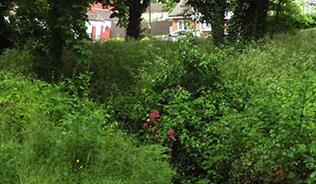The IAQM held a meeting to discuss how vegetation in cities could be used to reduce air pollution at specific road locations in urban areas. The subject was covered in two presentations that looked at different aspects of the value of vegetation in cities.
Green infrastructure and urban air quality
Professor Rob Mackenzie from Birmingham University described the work of the Lancaster University group. His presentation explained how effective green roofs / walls could be in improving air quality in urban street corridors. Green walls consist of walls of vegetation introduced onto street facades. There are two examples in Central London: near Edgware Road Station and near the Embankment near Blackfriars Bridge. It was argued that green walls can be much more effective than previous calculations had indicated. Previous estimates tended to look at the influence of vegetation over the urban canopy as a whole leading to reductions in pollutant concentrations of a few per cent. When applied to individual street canyons and especially to deep canyons with a height to width ratio of 2, reductions in concentrations of NO2 and PM10 of up to 50% were claimed. Greening within canyons was always thought to be universally beneficial if there were no emissions within the street. However trees can have an adverse effect if the trees suppress the mixing of air between the street canyon and the wider atmosphere through a process called “fumigation”.
The benefits of large tree species in urban landscapes
Mark Job from Arup described the value of large trees in city design from a landscape architect’s viewpoint. This presentation widened the discussion of the benefits of trees not just for aesthetic reasons, but also through their value in providing less tangible but equally valuable services such as producing shading and mitigating urban heat island effects. The value of trees and their associated services has now even been quantified in financial terms. The presentation concluded that there should be a long term strategy for the management and renewal of large urban trees as the services they provide have a value beyond purely the aesthetic and planners and architects should take these services into account when considering whether or not to plant trees and which species should be planted.
The presentations led to interesting discussion of the magnitude of the reduction by green walls. However all present were in agreement that vegetation had potential benefits in enhancing the quality of life of those living in cities but careful consideration of species type and the management of vegetation was required. Hence expect more discussion as the IAQM seeks to assess local measures to improve air quality and the environment.


